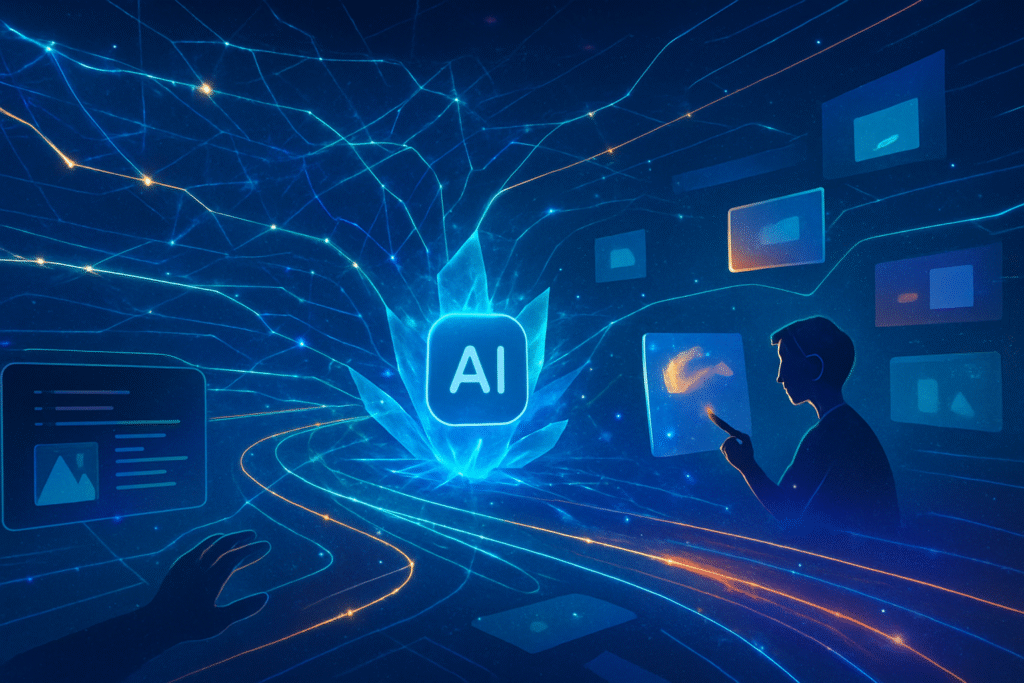
As of Thursday, October 2, 2025, Google (NASDAQ: GOOGL) has officially ushered in a new era of AI accessibility and development with the widespread availability of its Gemini 2.5 Flash AI model and the sensationally popular "Nano Banana" tool, officially known as Gemini 2.5 Flash Image. These releases mark a pivotal moment, making cutting-edge multimodal AI and state-of-the-art image generation capabilities broadly accessible to developers and enterprises alike. The move is poised to democratize advanced AI applications, fostering innovation across various industries by providing powerful, efficient, and user-friendly tools.
The dual rollout signifies Google's commitment to delivering high-performance AI solutions that cater to both the demanding needs of enterprise-scale operations and the creative aspirations of individual developers. Gemini 2.5 Flash offers unparalleled speed and cost-efficiency for everyday AI tasks, while the Nano Banana tool, with its viral pre-release buzz, is set to revolutionize visual content creation. Their general availability means that the powerful features once confined to research labs are now at the fingertips of a global community, ready to be integrated into the next generation of intelligent applications.
Unpacking the Technical Marvels: Gemini 2.5 Flash and the Nano Banana Breakthrough
Google's Gemini 2.5 Flash is engineered as a lean, agile, and robust AI model, meticulously designed for speed and efficiency without compromising on advanced capabilities. It stands out for its well-rounded performance across a spectrum of tasks, from large-scale summarization and responsive chat applications to precise data extraction. A cornerstone of its design is its inherent multimodality, allowing it to natively process and understand diverse inputs including text, code, images, audio, and video, while generating both text and image outputs. This comprehensive input-output flexibility positions Gemini 2.5 Flash as a versatile backbone for complex AI workflows.
A significant leap forward for a "Flash" model is the inclusion of "thinking capabilities," enabling users to observe the model's reasoning process. This transparency, coupled with a "thinking budget" to fine-tune the balance between latency and cost, offers unprecedented control for developers. Furthermore, Gemini 2.5 Flash boasts an expansive 1-million token context window, a feature that empowers it to ingest and analyze vast datasets, making it ideal for applications requiring deep contextual understanding. Its native tool integration, including seamless access to Google Search and code execution, along with support for structured output, function calling, Vertex AI RAG Engine, and chat completions, cements its position as a powerful and developer-friendly platform. This model distinguishes itself from previous iterations and competitors by prioritizing speed and cost-effectiveness for high-throughput scenarios, making advanced AI more economically viable for a broader range of applications.
The "Nano Banana" tool, officially known as Gemini 2.5 Flash Image, has transcended its viral codename to emerge as a groundbreaking AI image generation and editing model. Its initial widespread recognition during pre-release testing on LMArena underscored its revolutionary potential. The model's core breakthrough lies in its ability to maintain character consistency across multiple prompts, edits, and environments—a persistent challenge in AI image generation that Nano Banana effectively addresses. This means users can generate consistent visual narratives, ensuring characters retain their likeness throughout a series of creative endeavors.
Beyond consistency, Nano Banana offers advanced features such as multi-image fusion, allowing for the seamless blending of multiple input images into a cohesive output. Its natural language editing capabilities empower users to perform precise, targeted transformations—from altering hairstyles to changing backdrops—using simple textual prompts. Leveraging Gemini's extensive world knowledge, the model generates and edits images with a deep semantic understanding, opening doors to novel use cases like interpreting hand-drawn diagrams. Pose editing, diverse aspect ratio support (10 options), and lightning-fast generation times (reportedly 1-2 seconds) further enhance its utility. Crucially, all images created or edited with Nano Banana carry an invisible SynthID watermark, ensuring transparency regarding their AI-generated nature. The widespread availability of Gemini 2.5 Flash in June 2025, and Nano Banana in August 2025, means these stable, production-ready versions are now empowering developers to build sophisticated applications, with millions already flocking to the Gemini app since Nano Banana's launch.
Reshaping the AI Industry: Implications for Tech Giants and Startups
The widespread availability of Google's (NASDAQ: GOOGL) Gemini 2.5 Flash and the Nano Banana tool is set to send ripples across the AI industry, fundamentally altering competitive landscapes and creating new opportunities. Tech giants like Microsoft (NASDAQ: MSFT), Amazon (NASDAQ: AMZN), and Meta (NASDAQ: META) will undoubtedly feel the increased pressure to innovate further in multimodal AI and advanced image generation. Google's strategic move to offer high-performance, cost-effective models like Gemini 2.5 Flash through platforms like Vertex AI and Google AI Studio directly challenges competitors by lowering the barrier to entry for sophisticated AI deployment. Companies that can rapidly integrate these efficient models into their existing cloud offerings and services stand to benefit immensely, enhancing their product suites with cutting-edge capabilities.
For startups, this development is a double-edged sword. On one hand, the accessibility of powerful models like Gemini 2.5 Flash and Nano Banana democratizes AI development, enabling smaller teams to build sophisticated applications without the colossal R&D investments previously required. This could spark a new wave of innovation in areas like personalized content creation, dynamic customer service, and advanced data analytics. On the other hand, startups specializing in niche AI models or specific image generation tasks might face intensified competition from Google's broadly capable and widely available offerings. The emphasis on speed, cost-efficiency, and multimodal understanding means that any company aiming to leverage AI for high-volume, real-time applications will find Google's new models incredibly attractive, potentially disrupting existing solutions that are slower or more expensive.
The competitive implications extend to market positioning and strategic advantages. Google's integration of "thinking capabilities" in Gemini 2.5 Flash offers a unique selling proposition in transparency and control, potentially attracting developers who prioritize explainability. The viral success and technical prowess of Nano Banana in maintaining character consistency and enabling natural language editing position Google as a leader in practical, high-quality AI-driven visual content creation. This could shift market share in creative industries and marketing, where consistent branding and rapid content generation are paramount. Companies failing to adapt or integrate similar capabilities risk falling behind, while those that can creatively leverage these tools to enhance their products or services will gain a significant competitive edge.
Broader Significance: A Leap Towards Ubiquitous AI
The widespread availability of Gemini 2.5 Flash and the Nano Banana tool represents a significant stride in the broader AI landscape, signaling a clear trend towards more accessible, efficient, and multimodal artificial intelligence. This development fits squarely within the ongoing movement to democratize AI, moving powerful capabilities from specialized research labs into the hands of a global developer community. It underscores the industry's shift from purely academic breakthroughs to practical, deployable solutions that can be integrated into everyday applications and enterprise workflows. The emphasis on speed and cost-effectiveness with Gemini 2.5 Flash, combined with the groundbreaking creative potential of Nano Banana, suggests a future where AI is not just intelligent but also seamlessly integrated and economically viable across a multitude of sectors.
The impacts of these releases are far-reaching. On the positive side, they promise to accelerate innovation in content creation, personalized learning, advanced customer service, and intelligent automation. The ability of Nano Banana to maintain character consistency, for instance, could revolutionize brand storytelling, game development, and educational content, offering unprecedented levels of creative control and efficiency. Gemini 2.5 Flash's multimodal nature and extensive context window will enable more sophisticated and context-aware AI assistants and data analysis tools. However, potential concerns also arise, particularly regarding the ethical implications of highly realistic AI-generated imagery and the potential for misuse. The inclusion of SynthID watermarking in Nano Banana is a commendable step towards addressing these concerns, but the broader challenge of AI authenticity and deepfakes remains a critical area for ongoing vigilance and regulation.
Comparing this to previous AI milestones, the widespread rollout of Gemini 2.5 Flash and Nano Banana can be seen as a natural progression from the initial breakthroughs in large language models and image generation. While earlier models showcased impressive capabilities, these new releases focus on refining those capabilities for practical, real-world deployment—making them faster, more affordable, and more controllable. This moment echoes the widespread adoption of cloud computing or mobile app development, where foundational technologies became accessible tools for mass innovation. It signifies a maturation of AI, moving from impressive demonstrations to indispensable utilities that will power the next generation of digital experiences.
The Horizon of AI: Future Developments and Expert Predictions
The general availability of Google's Gemini 2.5 Flash and the Nano Banana tool sets the stage for a flurry of near-term and long-term developments in the AI ecosystem. In the near term, we can expect to see a rapid proliferation of applications leveraging these models across various industries. Developers will likely focus on integrating Gemini 2.5 Flash into existing enterprise solutions for enhanced data processing, automated content generation, and more responsive conversational AI. The Nano Banana tool is poised to become a staple in creative workflows, driving innovation in digital marketing, gaming, animation, and personalized media. Expect to see new startups emerging that specialize in niche applications built atop these foundational models, offering highly tailored AI services.
Looking further ahead, the "thinking capabilities" of Gemini 2.5 Flash suggest a future where AI models are not just powerful but also transparent and controllable. Experts predict that this emphasis on explainability and budgetable reasoning will lead to more robust and trustworthy AI systems, particularly in critical applications like healthcare and finance. The character consistency and advanced editing features of Nano Banana could evolve into fully autonomous AI content studios, capable of generating entire multimedia narratives from high-level prompts. We might also see deeper integration of these models with robotics and augmented reality, creating highly immersive and interactive AI experiences where digital content seamlessly blends with the physical world.
However, several challenges need to be addressed. Scaling these powerful models while maintaining cost-efficiency and minimizing environmental impact will be an ongoing engineering feat. Ensuring ethical deployment, particularly concerning the generation of realistic imagery and potential biases in multimodal understanding, will require continuous research, policy development, and robust oversight. Experts predict an accelerated race among tech giants to offer even more specialized and efficient AI models, potentially leading to a fragmentation of the AI landscape. The next phase will also likely focus on enhancing AI's ability to learn continuously and adapt to novel situations with minimal human intervention, pushing towards truly autonomous and general-purpose AI.
A New Chapter in AI History: Comprehensive Wrap-up
The widespread availability of Google's Gemini 2.5 Flash and the viral Nano Banana tool marks a significant inflection point in the trajectory of artificial intelligence. The key takeaways from this development are clear: AI is becoming more accessible, more efficient, and more capable of handling complex, multimodal tasks at scale. Gemini 2.5 Flash delivers a powerful, cost-effective solution for high-throughput AI applications, democratizing access to advanced reasoning and extensive context windows. Simultaneously, Nano Banana has revolutionized AI-driven visual content creation, offering unprecedented control over character consistency and natural language editing, effectively making sophisticated image generation a mainstream capability.
This development's significance in AI history cannot be overstated. It represents a maturation of AI technologies, shifting from groundbreaking research to practical, deployable tools that are ready for widespread adoption across industries. It underscores a strategic move by Google (NASDAQ: GOOGL) to solidify its leadership in the AI space by providing foundational models that are both powerful and user-friendly. The emphasis on transparency through "thinking capabilities" and ethical considerations like SynthID watermarking also sets important precedents for responsible AI development.
Moving forward, the long-term impact will be seen in the accelerated pace of innovation across various sectors, from creative industries to enterprise solutions. The accessibility of these tools will empower a new generation of developers and entrepreneurs to build previously unimaginable applications, fostering a vibrant ecosystem of AI-driven products and services. What to watch for in the coming weeks and months includes the emergence of novel use cases, the competitive responses from other major AI labs, and the ongoing dialogue around the ethical governance and societal implications of increasingly powerful and accessible AI. The stage is set for an exciting and transformative period in artificial intelligence.
This content is intended for informational purposes only and represents analysis of current AI developments.
TokenRing AI delivers enterprise-grade solutions for multi-agent AI workflow orchestration, AI-powered development tools, and seamless remote collaboration platforms.
For more information, visit https://www.tokenring.ai/.







